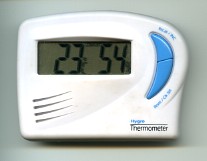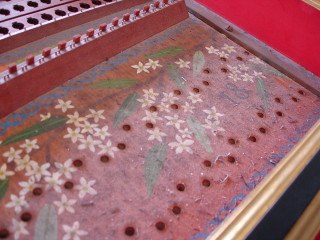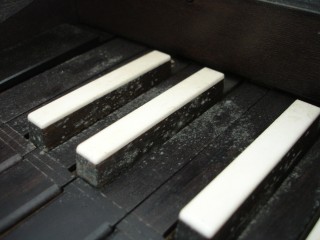Technical Library
TROPICS VII: Mould Control
Entire Contents Copyright © 2010 CBHTechnical LibraryTROPICS VII: Mould Control Entire Contents Copyright © 2010 CBH |
Fungi are enormously successful organisms, and once established, are difficult to eradicate—witness an invasion of your own body by tinea or candida, for example. From a conservation point of view, many methods to actually kill moulds cannot be used because they are also effectively toxic to humans, perhaps with long term residual effects (chemical treatments), or because they cause irreversible alteration at the cellular level of organic materials (gamma radiation).
Our best course of action is prevention rather than cure, and the time to take action is as soon as the onset of mould is detected. It is not possible to eliminate mould entirely because the spores are all around us in the air. We should, however, be able to discourage its growth considerably.
Good housekeeping is essential. Mould spores are present in all areas in all climates, but are usually dormant. When the conditions become right, they will proliferate and reproduce. For most of our problem species, we probably really only notice them when they are already established, and readying to fruit.
 CAREY BEEBE |
| Simple digital thermohygrometer |
By eliminating some of their creature comforts, you will make it harder for them to get a foothold:
Examining each of these in turn, here’s how to go about making things more difficult for mould:
Humidity
High humidity (above 70%) provides rapid breakdown of the organic materials moulds
require for food. Stable humidity around 55% is best for the longevity of your
instrument. Mould growth can be largely contained by lowering the humidity. In
serious conservation environments, like museums or libraries, a steady 45% or
50% humidity and 20°C is achieved with serious climate control systems.
If you live in a hot and humid climate, begin by taking heart that even wealthy institutions in more temperate climates have spent large sums of money to end up with inadequate systems in man’s futile attempt to control his environment. You may not have or want air conditioning, and in fact air conditioning without proper humidity control is disastrous in itself,with the potential to dry the air excessively.
Temperature
Most air conditioning in the tropics is set at too low a temperature for
human comfort: 23°C is probably plenty low enough if you have
adequate dehumidification. Freezing cold air might lull you into a false sense
of security: Mould can still grow in your refrigerator at 4°C, so lowering
the air temperature in itself is insufficient.
Dehumidification may be required in addition to air conditioning and in certain parts for institutional environments is highly recommended. In some countries like Hong Kong, freestanding domestic dehumidifying units are readily available in all appliance stores. The amount of moisture these small machines can pull out of the air is quite amazing: You must remember to empty the tub daily, or arrange the position of the machine to allow a permanent drain pipe to outside.
Stability of climate is the aim, so only running the air when you are home is not sufficient for the safekeeping of your instrument and probably does more harm than good. Nothing is worse than the school which turns off the air at night and for the weekends, or for the most inclement six weeks of the year over the summer holidays!
Whether you are caring for your own instrument, or an institutional one, your first step is to be aware of what the conditions are. Buy a simple digital thermometer/hygrometer like that shown in the photo: It’s compact and has quite sufficient accuracy for your application. You can purchase this inexpensive model directly from us, or perhaps find it in local electronics stores in larger cities. The older hair gauges require frequent recalibration, without which they become worthless as reliable indicators. When you know what the conditions are, you can begin to do something about them.
Air circulation
Mould spores require still air to settle on suitable surfaces and reproduce:
Keep the air moving by opening the windows and using a fan in the room if you
don’t have air conditioning. Your harpsichord will stay in tune longer
if it is closed when not being played—and this is recommended to control
dust—but be sure to at least give it an airing each day. Don’t leave
your instrument closed for long periods of very humid weather. It is especially
disastrous if you go away on holidays and leave your instrument with your house
shut up like a sauna.
Light
Keep your room light and airy, not like a disused railway tunnel which is
only perfect for growing mushrooms. Ultraviolet light inhibits the growth of
mould, and may even kill it. Direct sunlight, however, is detrimental to good
furniture, artworks and books.
 CAREY BEEBE |
| Wrestplank veneer before and after cleaning (mouseover) Sydney, NSW |
Dust control
As well as containing mould spores itself, dust provides food for mould growth.
If you control the dust, you are starving the mould of food. Vacuum your house
regularly, and more often if you have large pets. Vacuum cleaners which offer
HEPA filtration have the advantage of trapping invisible particles down to the
size of mould spores, often only 5–50µm.
Mould is particularly difficult to eradicate once established on the porous wood of the soundboard. After a while with a little moisture in the air it becomes sticky and exactly the menu ordered by your gourmand micro-organisms. Don’t provide food for unwanted guests!
Keep the lid and flap of your instrument closed when not playing, but allow the keys to breathe by not using the fallboard, if you have one. Regularly remove dust from the lid, and don’t forget the proud edge of the internal dust batten which stops the dust falling through the crack between lid and flap and onto the soundboard. Use a soft, long-haired paint brush or feather to reach under the strings to gently loosen the dirt, brushing it down to the tail end before collection in a vacuum cleaner.
 CAREY BEEBE |
| Keyboard before and after cleaning (mouseover) Byron Bay, NSW |
You may find it easier to blow the dust into the tail corner if you have a vacuum cleaner which you can hook up backwards to blow instead of suck, then remove the pile of dust from there by sucking. An old piano tuner gave me a wooden portable hand compressor which I find most useful for blowing out the dust, and there are modern German-made plastic equivalents today, which you can order from us. For my portable tool kit, I use a photographic blower bush which I picked up in Kaohsiung. If you keep your soundboard area clean, you will find that you almost never need to use the feather or brush, just regularly blow the dust out once a month.
When soundboards have not been dusted for some time, the dirt becomes more difficult to completely remove. The very best cleaning can then only be done when the instrument is destrung.
| DON’T SCRUB YOUR SOUNDBOARD HARSHLY, PARTICULARLY IF YOU HAVE A SOUNDBOARD PAINTING. |
Cleaning the keys
Keep your keys clean. Grease from the fingers can especially become entrapped
in the bone keys, and this is a good enough reason not to play immediately after
an ice cream or peanut butter sandwich. Wash your hands before playing, and encourage
your visitors or pupils to do likewise! To clean your keys, use a well-rung out
dishcloth with a little detergent, polishing your key covers dry immediately
with another soft cloth. And don’t forget the coupler rail if you have
double manual instrument. If your environment is particularly dusty, every two
years or so, it’s probably good policy to remove the keyboards so you can
vacuum the keywell thoroughly. This will also provide the opportunity to remove
the crud from a pencil eraser, odd paperclips, and maybe even some money.
Mould removal
If you notice mould on the painted case, its evidence can often be removed
with an antibacterial solution like that used to wash babies’ nappies (diapers,
for our kind American readers) or even a weak bleach or ammonia solution. Use
hot water and rubber gloves to save your skin. You don’t need a bucket
full, because that is asking for trouble—liquids don’t belong around
musical instruments. A cupful of prepared solution is plenty, and keep it on
the floor where you might have opportunity to kick it over, but at least you
cannot knock it so it spills on the soundboard. The bleach solution is probably
strong enough if you can just smell a hint of the chlorine. Again, dry the case
off immediately with another soft cloth, wiping off along the instrument in the
same direction the paint and varnish were applied originally.
It is unlikely that the cleaning you are doing will eradicate the mould unless you also improve the climatic conditions. Most of these cleaning solutions probably only clean the surface, and offer little in the way of residual effect. Lately, I’ve been using an anti-fungal hygiene fabric rinse with particular success.
| Soundboard cleaning Carey Beebe demonstrating how to dust a harpsichord soundboard. |
|||
| Technical Library overview | |
| Harpsichords Australia Home Page |